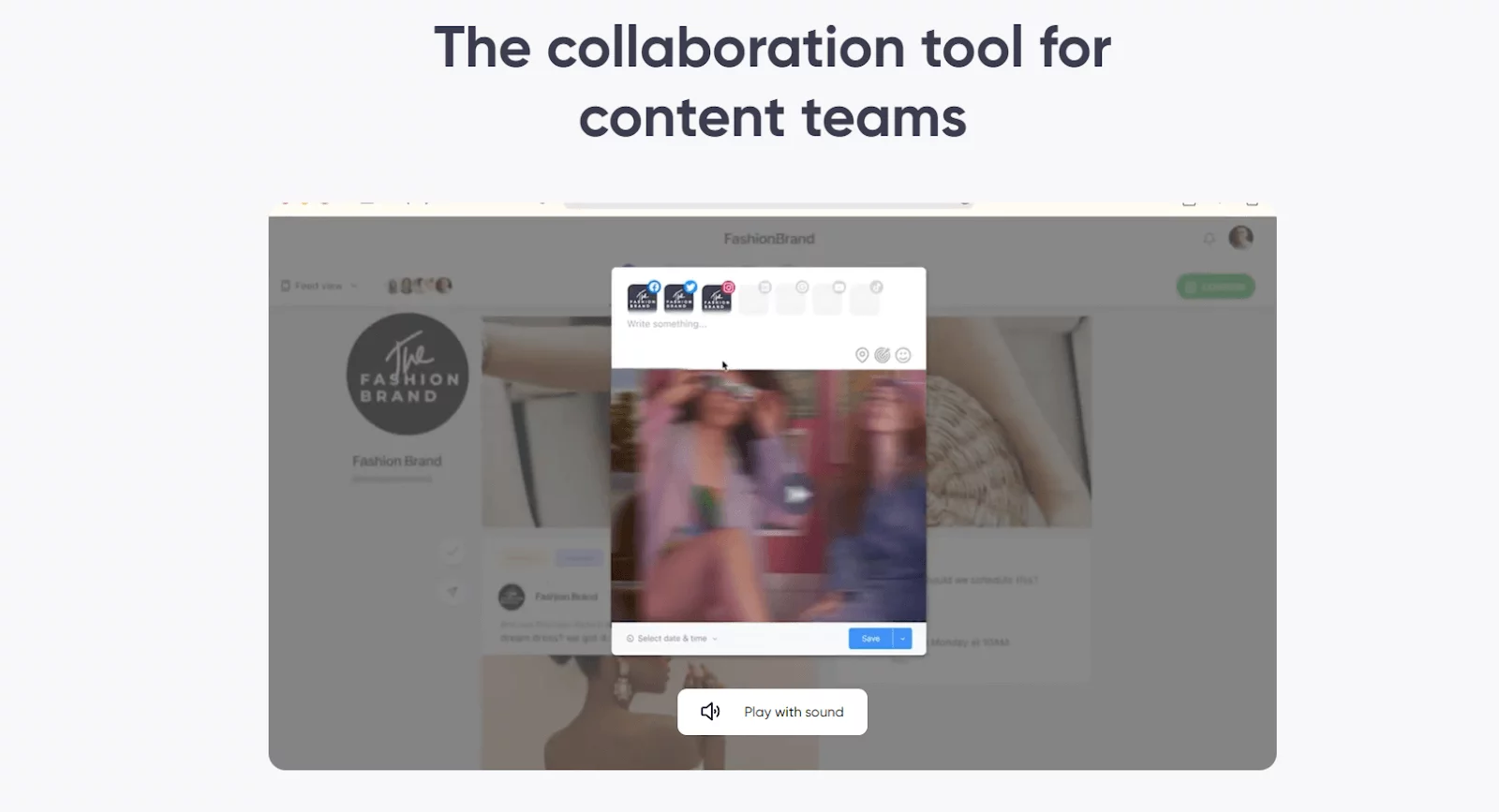The SaaS market has grown tremendously over the years with no signs of slowing down.
While this indicates more business opportunities for SaaS firms – it also means massive competition.
Wondering how to gain an edge in the competitive digital landscape? Building a robust SaaS marketing strategy is the best way out!
SaaS marketing focuses on delivering customer value by offering tailored experiences and nurturing relationships. Unlike traditional marketing practices, the emphasis is on SaaS customer acquisition and engagement while improving retention rates by creating upselling opportunities.
The outcome? Long-term growth that could establish your firm as an industry leader, generating revenue streams.
In this post, we’ll explore seven outstanding SaaS marketing campaigns to inspire your brand’s growth with industry leaders’ examples.
Let’s get started!
1. Zapier’s success with co-marketing
Zapier’s co-marketing SaaS strategy that helped them jump from zero to 600,000+ users within three years is purely a stroke of genius.
- What did Zapier do?
The automation software provider joined hands with other SaaS firms to create more value for its customers. The idea was to help the target market connect Zapier with other helpful platforms without any complexity.
Now, coming to their SaaS marketing campaign, Zapier’s team found an intelligent way to attract relevant traffic to their website. They created dedicated landing pages for every combination of apps one could connect.
For instance, if a user ran a Google search for “Groove and JIRA”, Zapier would appear in the results.
Next, they collaborated with partner firms to determine the best marketing strategies for mutual benefit.
For instance, Zapier identified specific content formats and patterns that worked well for social media channels. So, they asked their partners to share particular types of content for distinct social channels. This helped them execute co-marketing campaigns that added to mutual benefit.
That’s not all!
Zapier added content marketing to the mix. Their team invested in creating relevant blog posts and articles, and this move paid off.
Today, Zapier boasts 9.2+ M traffic.
Key takeaways from Zapier’s strategy:
- Collaborate with other SaaS businesses to create a valuable co-marketing SaaS strategy.
- Content is pivotal to running winning SaaS marketing campaigns. So, design landing pages with the right content for users to explore you and your partner firm’s products.
- Build a library of relevant and helpful blog posts and articles to attract and engage prospects.
- Work with your partner companies to gauge the best SaaS marketing strategies. This can save effort and time and help achieve the best business outcomes.
2. HubSpot’s targeted multi-channel approach for ongoing success
HubSpot’s SaaS marketing strategy is a perfect example of how to do it right.
This leading CRM software provider leverages a targeted multi-channel approach, which has helped it build credibility, achieve massive traffic, and create a loyal customer base.
Here are the key tactics that HubSpot has integrated into its long-term marketing plan to ensure ongoing success:
- Content Marketing: HubSpot’s team creates relevant and valuable content adhering to Google’s E-E-A-T guidelines (Experience, Expertise, Authoritativeness, and Trustworthiness).
- SEO Optimization: Their search engine optimization strategy is on point. It helps HubSpot’s content achieve top rankings in SERPs, driving relevant traffic.
- Video Marketing: HubSpot’s team leverages videos to share product details, educate the audience, present the company’s insights, and more. This practice has helped the team boost audience engagement to a large extent.
- Podcasting: HubSpot connects with its audience by conducting informative podcasts. This has helped them enhance the engagement quotient and achieve a mass following.
The key to HubSpot’s phenomenal success is its consistency. Their team ensures delivering content consistently to stay relevant and adapts the strategy to keep up with the ever-evolving SaaS industry trends.
Key takeaways from HubSpot’s SaaS marketing strategy:
- Leverage content marketing, SEO optimization, video marketing, and podcasts to build a solid online presence.
- Stay consistent in executing the multi-channel approach to strengthen your ongoing marketing campaigns.
- Track ever-evolving customer preferences and industry trends to revamp your campaigns. This can help attract traffic and build engagement while improving SaaS customer retention rates in the long term. HubSpot’s success is a proof.
3. Scrut’s smart content marketing integration
Scrut Automation is one of the leading risk-focused compliance automation platform providers. Their team incorporated a smart content marketing strategy to boost brand awareness and attract high-quality leads.
In fact, the strategy helped them win prestigious awards and stand out as trustworthy compliance automation solution providers.
- What did Scrut do?
The SaaS company created a plethora of helpful blog posts providing valuable insights into cybersecurity. Besides, the content offered information on how their product and services can help overcome the cybersecurity challenges without being biased.
For instance, the company created unique, expert-led educational blog posts, articles, and eBooks on crucial topics, such as GRC (governance, risk, and compliance), information security frameworks, global data privacy regulations, and more.
What’s more?
Scrut’s team leveraged targeted advertising and promoted these blog posts on social channels and the website.
This ongoing marketing strategy empowered their audience to gain in-depth insights into the latest cybersecurity trends, challenges, and tips to combat them using their services and products.
Most importantly, it helped Scrut position itself as a thought leader, building credibility among the target market.
No wonder, Scrut has earned a whopping 124 badges and three leader awards in the G2 Spring 2023.
Key takeaways from Scrut’s ongoing marketing strategy:
- Create and share educational and informative content in formats like blog posts, articles, eBooks, and more. Ensure the content addresses the target market’s pain points.
- Leverage social media channels, websites, and other platforms to promote the content and reach a massive audience. Targeted advertising can further multiply the engagement rate.
- Demonstrate expertise in your content marketing strategy to earn the audience’s trust and establish credibility in the market.
4. Trello’s word-of-mouth marketing with freemium plan
Trello, a renowned project management and collaboration tool, created a buzz with its clever word-of-mouth marketing campaign.
- What did Trello’s team do?
When initially launched, Trello was just like other startups trying to make a mark in the industry within tight budgets.
As heavy paid advertising was not an option, Trello’s team deployed a product-driven approach.
The goal was to reach and convert as many prospects as possible without spending hefty money. So, they leveraged their product and offered free sign-ups or a freemium plan. The unique features of Trello spoke for themselves and started attracting audiences.
The features were easy to use. They helped solve challenges that project managers were facing. This led to word-of-mouth and helped Trello gain authentic, loyal users.
The outcome? Engineering, sales, and even human resources departments started using Trello.
What’s more? Trello expanded its horizon and implemented a unique referral strategy called “Trello Gold”. This strategy incentivized customers to refer the app to their coworkers and professional network.
The best part? Trello Gold enabled customers to use business class features, including access to customized board backgrounds, three power-ups, and more (for 30 days).
This genius strategy organically led to inviting high-quality leads, offering them a chance to explore paid features without committing right away.
The outcome? These freemium offerings led to word-of-mouth and boosted Trello’s user base by 426% in 3 years.
Key takeaways from Trello’s Word-of-Mouth marketing campaign:
- Focus on developing a quality product. Ensure your product is a target market fit and can help resolve the audience’s pain points.
- Leverage your product’s unique features to reach the target audience without spending much on paid advertising.
- Offer freemium plans or free sign-ups to engage, attract, and convert users without overwhelming them.
- Deploy referral strategies to incentivize customers. Offer rewards when they refer your SaaS product to their professional networks.
5. Dropbox’s referral marketing for massive growth
Dropbox is a cloud file storage or hosting service provider launched in 2007. At that time, the market was crowded with cloud storage service providers.
Moreover, tech giants like Google and Microsoft were also gearing up to enter the cloud storage market. This meant fierce competition. So, Dropbox had to go beyond the extra mile to thrive in the market.
Their team started brainstorming and found that almost one-third of Dropbox customers came from referrals of existing users. However, despite a strong word of mouth, Dropbox wasn’t driving growth fast enough.
Dropbox took its referral marketing campaign to the next level in two ways.
It announced 250 MB of free storage space each for referrer and referee. Soon, the team witnessed invites flooding out via social media and email, leading to an increase of 60% in sign-ups via referral.
That’s not all.
Understanding the audience’s mindset, Dropbox’s team integrated their referral program into the onboarding process. This move encouraged users to invite other professionals during sign-up.
Next, they increased the limit and offered 16 GB of free space to invite other professionals. Their clear messaging helped customers understand the plan better and increased participation.
Here’s their masterstroke – they created a referral dashboard where customers could track earned rewards, pending referrals, referred users’ statuses, and more. This practice increased transparency and encouraged users to invite more referrals.
The outcome was 3900% growth within 15 months!
Key takeaways from DropBox’s referral campaign:
- Leverage the power of referrals. Incentivize the referrer and the referee to boost referral sign-ups.
- Integrate the referral program into the user onboarding process.
- Communicate the process clearly to encourage more participation.
- Offer a transparent tracking dashboard to ignite a sense of trust among users.
6. MailChimp’s unique marketing campaign to invoke curiosity
MailChimp capitalized on a unique marketing campaign idea to earn leads by invoking curiosity.
Their goal was to primarily engage a creative class of small business (SMB) owners. So, an eye-grabbing SaaS campaign was a must to stand out.
- What did the marketing automation platform provider do?
MailChimp crafted campaigns depicting the brand’s core values without revealing its name!
Their campaigns used mispronunciation of “MailChimp” and created nine engaging short films featuring unconventional creatures, such as a singing sandwich, a dog made of kale, and more.
The idea was to make people guess about the brand. This is what grabbed the attention of their audience. Soon, people started searching for information about this company and discovered MailChimp.
This brilliant strategy proved a game-changer and helped MailChimp outshine its competitors.
This campaign earned 988M media impressions, 4 minutes per engagement (nearly double the industry average), and 67M organic searches.
Key takeaways from MailChimp’s unconventional campaign:
- Think out of the box. Deploying unconventional SaaS marketing campaigns can prove a game-changer. It can help you outshine competitors and attract the target market’s attention.
- Making the audience curious about your product can help pull massive organic traffic.
- Ensure your campaigns contain elements that reflect your core values.
- Experimenting is a good idea. Let the audience search for your brand rather than boast about it.
- Once you get the attention, move on to targeted product-led strategies.
7. Canva’s multi-faceted marketing campaigns
Canva, the free-to-use online graphic design platform, has come a long way.
Its success is built on multi-faceted marketing campaigns.
- The main principles that helped Canva grow
The company started small. Instead of targeting the broad market, they narrowed their approach and targeted only high-expectation customers (HXC). Canva identified the needs of its niche audience and implemented features that could meet them.
Next, Canva identified the top channels like email, social media, and more to reach the target market. They capitalized on the customers’ experiences and shared the same to attract new audiences.
What’s more? They offered guides to help users navigate the platform with ease.
All these steps helped the company penetrate the vast market and gave rise to positive word-of-mouth.
Additionally, Canva joined hands with influencers like Guy Kawasaki to uplift their efforts. Influencer partnerships combined with podcasts and viral content gave Canva the required boost.
What’s more? Currently, Canva leverages product-led growth (PLG) strategy and creates SEO-driven content to expand globally. In short, the product is the hero of the company.
No wonder Canva has earned over 100M+ users.
Key takeaways from Canva’s multi-faceted marketing campaigns:
- Understand the target market needs and pain points to develop the right product.
- Start small. Target a specific audience that would benefit from your product. This strategic move can lead to positive word of mouth.
- Leverage the best marketing channels, such as emails, social media, and more, to reach the target audience.
- Collaborate with influencers to amplify word of mouth. Besides, strategies like podcasts, viral content, and SEO-driven content can also help reach the goal.
- Improve your product as per the market’s ever-evolving needs. This practice can help you thrive in the market in the long term.
Optimize your SaaS marketing campaign with Planable
Today, most C-suite executives and decision-makers use social media channels like LinkedIn, Facebook, Twitter, and more to explore SaaS products and services.
Social media has thus become a crucial channel for executing successful SaaS marketing campaigns. When used wisely, this marketing channel can help you reach, engage, educate, and attract the right audience.
Planable is one of the leading cloud-based social media collaboration and approval platform used by forward-thinking agencies and brands across the globe.
It allows creating content in multiple formats for various social media platforms, including Facebook, LinkedIn, Twitter, and Instagram.
Its drag-and-drop editor allows adding media files, hashtags, emojis, Giphy, and more to make the content eye-grabbing.
Besides, it allows you to schedule specific posts for specific campaigns at your convenience.
Key features of Planable:
- Automated publishing
- Content management
- Multi-account management
- Multi-user collaboration
- Post scheduling
- One-click approvals
- Social media KPIs tracking
- Notifications engine
- Shared space for collaboration
Planable can thus help you create strategic social media marketing strategies for your SaaS.
Conclusion
SaaS marketing can seem overwhelming and draining. But with the right approach, it can become seamless and help you attract, convert, and retain the right customers.
Understanding the seamless strategies of the leading SaaS players and implementing the takeaways shared in this post can help you achieve the goal. Saas marketing tools like Planable can further ease the hassles and help you attract high-quality leads via social media.









